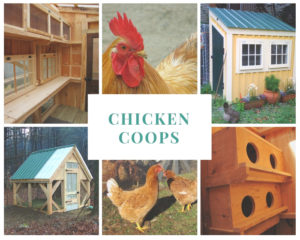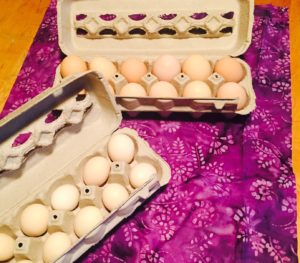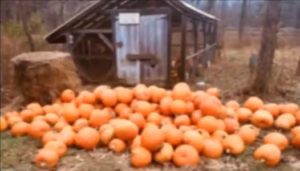Help Your Chickens Thrive This Winter
Most breeds of chickens are hardy animals. Just like songbirds, they have feathers and a voracious appetite to help keep them warm when the temperatures drop. On our homestead, we choose to raise breeds that are hardy, good layers, and good mothers. Two breeds that we found represent these qualities are Orpington and Wyandotte. We also found great delight in several hardy bantam breeds such as Japanese Bantams, Red Pyle, and Quail Antwerp Belgium.
Surviving the Winter
Keeping Warm
Chickens do not need a heater in their coop to thrive during the winter. In fact, providing this will most likely make them more susceptible to cold temperatures. Providing them with fresh, unfrozen water, food to fuel their body, and shelter from precipitation and wind are the best things you can give them. After all, chickens are already wearing a down coat. When the weather turns cold, chickens will roost closely together and they will puff our their feathers, trapping the warm body heat.
Laying Eggs
Providing light to extend the daylight hours to between 14-16 hours will help your hens continue to lay through the winter. Providing this artificial daylight will prevent them from molting. We have raised flocks with light and without. Anecdotally, we have not noticed a difference in health when a hen is allowed to molt and when she is prevented from doing so; she appears to thrive both ways. If you choose to extend the daylight hours, we also recommend feeding your hens layer pellets as we have noticed an increase in the amount of eggs laid when eating layer pellets versus only whole corn.
Preventing Frostbite
Chickens’ feet are fully covered by their feathers when they roost on wide, square roosts. Roosters and hens with larger combs may get frostbitten tips on the comb. Generally, if the chicken is healthy, they will fare fine and the frostbitten bit will eventually turn black and harmlessly fall off.
We like purchasing a few round bales of hay and putting them right in the coop. You can peel hay off as needed for nesting material and to keep the coop floor clean. If snow and rainfall on the bales, they decompose throughout the winter. The process of decomposition provides healthy bacteria and organisms for the chickens to eat as they scratch the bale apart. The flock can also nest in the hay and it can help to keep them warm on bitter cold nights by nesting it the fluffed hay.
Winter Feed
We like to provide our flock with a variety of food, for keeping warm, health, and to prevent boredom. Whole corn is affordable and an excellent feed to help your chickens stay warm through a cold night. We give the flock some corn when there is still daylight, just before they roost. This way, they will eat and digest through the night; providing ample fuel through the cold night to stay warm.
Halloween is over and temperatures are often freezing. This is the time of year when pumpkins are cheaper at your local garden center or farm. We always get a truckload and throw the pumpkins right into the coop, making sure to break some open so the seeds can be easily accessed. We take both solid and soft pumpkins. The pumpkins provide plenty of healthy food for your flock and what is left in the spring quickly breaks down and decomposes as long as you have a dirt floor in your coop.
Feed to Prevent Boredom
There is meaning behind the phrase feeling “cooped up”. Generally, chickens do not like going out in the snow, so most of the winter they are in the coop, or “cooped up”. It can get pretty boring spending the winter in one place. To help alleviate boredom, we cut sunflowers grown over the summer and hang the dried flowers upside down from the ceiling of the coop. We set them at a level where the chickens have to jump to get at the seeds. Pretty soon the whole flock will join in the seed jumping game!













